Watershed Conservation
Aquatic Science
Some of Pennsylvania’s most vulnerable aquatic species – such as the native brook trout, Eastern hellbender and freshwater mussels – depend on cool, clean waters for their survival. Scientists within the Western Pennsylvania Conservancy’s watershed conservation program study how human and other impacts are influencing aquatic life in our region’s rivers and streams. Our scientists study and assess various freshwater aquatic systems – both at a molecular level and across entire ecosystems. The following are examples of our aquatic science work.
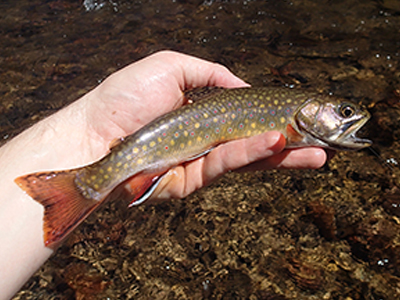
Brook Trout Assessments
The eastern brook trout, Salvelinus fontinalis, is Pennsylvania's state fish and the state's only native trout. The genus name “Salvelinus” is derived from an old name for char. The species name “fontinalis” means “of springs.” The brook trout thrives in small, cold, clean streams, which are typically located in the headwaters of our watersheds in Pennsylvania.
The habitat of native brook trout has been greatly reduced in Pennsylvania since European settlers arrived, with land-use changes, mining impacts, deforestation and infrastructure, which leads to stream habitat degradation and reduces habitat connectivity. Self-sustaining populations can still be found naturally reproducing in both limestone, spring-fed streams and cold, mountain freestone streams. Brook trout can tolerate mildly acidic waters, but cannot tolerate water temperatures over 65 degrees Fahrenheit. Currently, these water quality requirements are best embodied by the forested landscape of Pennsylvania.
The Conservancy's projects target native brook trout waters in a variety of ways. This includes locating populations through our partnership in the Unassessed Waters Program with Pennsylvania Fish and Boat Commission, identification and restoration of culverts and dams through aquatic organism passage (AOP) projects, and habitat improvements through in-stream and riparian restoration. All of these projects work together to ensure that brook trout have access to quality habitat in the face of climate change and its implications for this species into the future.
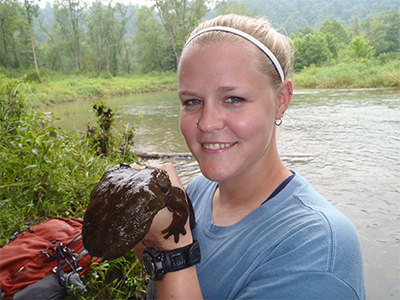
Eastern Hellbender Surveys
Pennsylvania is fortunate to have some of the best populations of North America’s largest salamander, the eastern hellbender. This species can reach large sizes, over four pounds in weight and two feet in length. Many people have never been privileged to see one of these reclusive creatures because they are nocturnal and live almost exclusively under large cover objects, such as flat rocks the size of a kitchen table. The Conservancy has been studying this cryptic species since 2007 across the Commonwealth, attempting to document as many populations as possible, since currently the animals’ complete distribution is unknown.
Our staff employs a variety of techniques to find this elusive animal including: lift and turn surveys, SCUBA surveys, and a new technique called eDNA, which stands for environmental deoxyribonucleic acid. Using this new technique scientists collect a water sample from the stream, filter it, and then send it to a conservation partner to amplify the DNA. From this, we can document whether or not an animal is living nearby without completing a lift and turn survey. We are currently employing this technique in new watersheds to hopefully identify new populations of this charismatic species.
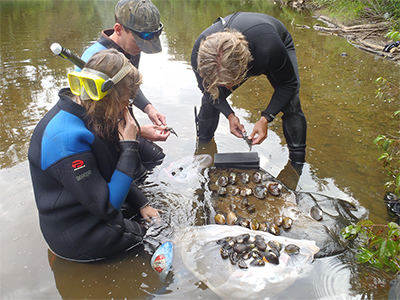
Freshwater Mussel Surveys in the Allegheny National Forest
Since 2014, our staff has been completing freshwater mussel surveys in collaboration with United States Forest Service (USFS) biologists from the Allegheny National Forest (ANF) to gain a better understanding of the current distribution of freshwater mussels across the federal lands they manage. To date we have surveyed 54 sites on medium sized streams, rivers, and several bays of the Kinzua Reservoir with both SCUBA and snorkel techniques. Numerous streams contained no mussel fauna but we have managed to collect over 545 individuals representing 16 species.
Tionesta Creek contained the highest diversity of mussels collected, with 14 species collected while 11 sites contained no mussels. Conservancy staff plan to continue surveys in this region in an effort to inform USFS staff about freshwater mussel resources. We work closely with WSFS so biologists can make proper management decisions based on recently collected scientific data.
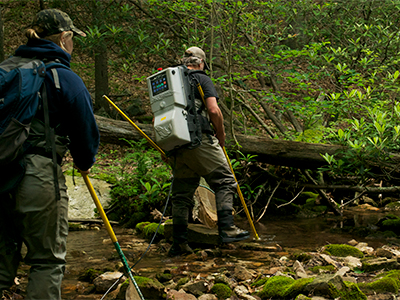
Unassessed Waters
WPC has been a partner with the PA Fish and Boat Commission (PFBC) in conducting field surveys to document the biological, chemical and physical attributes of Pennsylvania’s unassessed waters since 2012. The unassessed waters initiative has many goals, including continuing to update the PFBC’s list of wild trout waters, updating water quality protection status for streams and establishing benchmark statistics for decision making. Project partners also work to inform and educate the public on issues related to the importance of proper assessment of and increased water quality protection for unassessed streams.
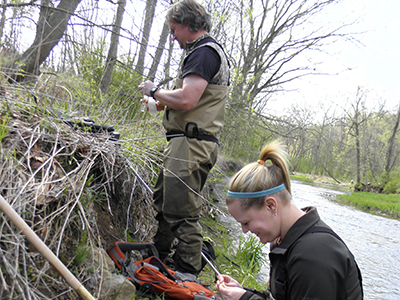
Visual Assessments
Many of our watershed restoration projects are initially identified during visual assessments. To complete these assessments, our scientists walk the entire length of a stream and conduct a physical assessment of the stream’s channels, banks and surrounding riparian areas.
Locations that contain failing streambanks, improperly sized culverts, or agricultural fields that allow animals to directly access streams which often results in water quality degradation are noted, photographed and are investigated as potential restoration projects in the future. The Conservancy's scientists also conduct chemical and biological monitoring of the water quality in order to rank priority restoration areas based on the physical assessment and monitoring results.
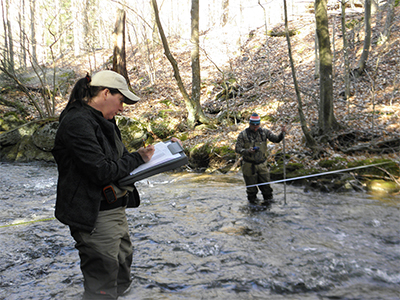
Energy Impact Research
The Conservancy is involved in several efforts to monitor the impacts of energy development across the region. Aquatic scientists play a central role in this critical ongoing research.
For More Information:
Watershed Conservation Program
Western Pennsylvania Conservancy
1067 Philadelphia Street, Suite 101
Indiana, PA 15701
